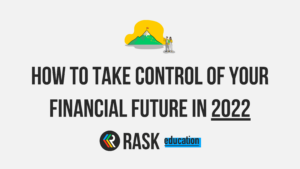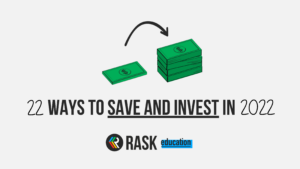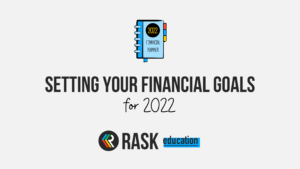This case study is part of our Australian Financial Independence, Retire Early (FIRE) course available for free on Rask Education.
I am 49 years old and work as a healthcare professional in Melbourne. I write at Latestarterfire and also refer to myself as Latestarterfire. My blog is primarily about discovering FIRE late in life and having a public space to keep me accountable on the journey as I don’t know anyone in real life pursuing FIRE.
I share my wins and struggles and hopefully someone somewhere can relate to the experiences.
Plus I wanted to add an ‘older’ voice – sometimes, it seems that everyone is very young and many are well on their way to retiring early in their 30s and 40s. But the more I write, the more I discover there are many late starters like me in the FIRE community. So I created the Late Starter to FI Series on my blog to share our stories.
You can find me on Twitter and Facebook in addition to my website, Latestarterfire.
When did you first discover the concept of FIRE?
I first discovered the concept of FIRE in 2018. I was working in a highly demanding role and was stressed out all the time. I woke up one morning, really anxious about retirement. Up to this point in time, I barely acknowledged the concept of retirement but now, suddenly I felt it was looming and I was very unprepared. The thought of working another 20 years was unbearable.
As I googled how much I need to retire, I stumbled across Mr Money Mustache and other FIRE blogs – I was hooked. From being scared about retirement, I now longed to retire ‘early’.
What is your motivation towards achieving FI/RE?
I want my time back. Time to pursue whatever I want to pursue, time to explore and rediscover what makes me happy, time to spend with people I love; without having to worry if I can pay the bills.
My Mum was diagnosed with dementia in her 70s but her decline can be traced back to her early 60s. Besides wanting to be in a position to care for her later as her condition deteriorates, I am terrified I too will have dementia in the future. Achieving FI and retiring at 55 will give me a few years to live life on my own terms instead of being so committed to my full time job.
You tend to reevaluate your life and note what is important as you question how much money you really need to be happy.
But seriously, just being on the journey towards FIRE, I have made beneficial changes to my life already. I quit my stressful role and took on a role that is more manageable with less responsibilities. Nights and weekends are now mine again.
How close are you towards achieving your FI goals?
I’m halfway there. My 3 phase retirement plan involves accessing my superannuation at 60 and building a bridge the gap fund for the 5 years prior to accessing superannuation. I own my house outright so that is my phase 3 – sell the house should I need to enter aged care.
Right now, I am salary sacrificing and contributing the maximum of $25000 (which includes compulsory employer contributions) towards superannuation. I had hoped to stop that this year to direct more towards the bridge the gap fund. But the pandemic has slowed down my progression so I will reassess next June.
The worst case scenario is that I can’t retire fully at 55 – I can always reduce to part time and work a few lucrative shifts ie nights and weekends, to supplement my income.
What investment journey have you taken and why did you choose to do it that way?
I don’t have any investment property. My investment is in shares outside of superannuation – I have a small portion in individual shares and the rest in ETFs and LICs. Before I knew about ETFs or LICs, I chose 1 Top 200 company from each industry/category in the ASX.
I was very relieved to learn about ETFs and LICs, where they just track an index and I don’t have to worry about monitoring each company’s performance. The small portion of individual shares will be the first I sell when I retire. There is no point selling now – I don’t want to pay capital gains tax while at a higher tax bracket.
I favoured LICs – the older companies eg AFI, MLT who have a good track record. I like them because as a company, they don’t have to distribute income all at once and can therefore in theory, still offer dividends when times are tough. But I will balance soon with buying more ETFs which is truly passive and diversified. I aim to have LICs and ETFs (Aussie shares) in equal proportion. I have a very small proportion of ETFs that track overseas indices.
What’s the hardest part of working towards FIRE?
The middle part – where I am firmly entrenched in … This is the bit where it seems you are only waiting for compound interest to do its thing. I am not a patient person so it’s hard. It’s just a matter of continuously investing, reducing expenses wherever possible and tracking progress.
Celebrating small wins along the way keeps me motivated!
You best advice and/or resources for others just getting started?
There is a lot of advice on the internet and lots to learn about so it can be overwhelming at the start. Find a few people you can relate to and learn from their mistakes, tips and strategies. Look at your own circumstances – don’t simply apply what they have done.
There is no short cut – increase the gap between income and expenses and invest wisely.
The math is the easier part; the harder part is our ingrained money habits and hangups which may or may not need changing. Stay connected online especially if there is no one you know in real life pursuing FIRE – I have made many friends in the FIRE community.
And I am sure this FIRE course is a great place to start!



